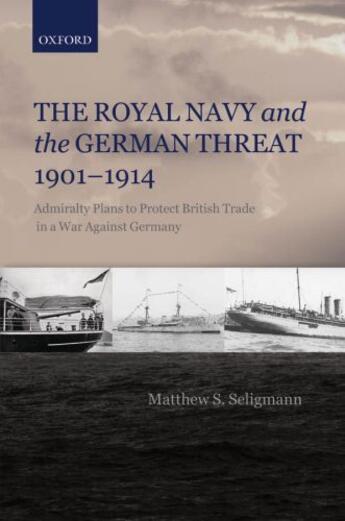Des idées de lecture pour ce début d'année !
Passionné(e) de lecture ? Inscrivez-vous
gratuitement ou connectez-vous pour rejoindre la
communauté et bénéficier de toutes les fonctionnalités du site !

When and why did the Royal Navy come to view the expansion of German maritime power as a threat to British maritime security? Contrary to current thinking, Matthew S. Seligmann argues that Germany emerged as a major threat at the outset of the twentieth century, not because of its growing battle fleet, but because the British Admiralty (rightly) believed that Germany's naval planners intended to arm their country's fast merchant vessels in wartime and send them out to attack British trade in the manner of the privateers of old. This threat to British seaborne commerce was so serious that the leadership of the Royal Navy spent twelve years trying to work out how best to counter it. Ever more elaborate measures were devised to this end. These included building 'fighting liners' to run down the German ones; devising a specialized warship, the battle cruiser, as a weapon of trade defence; attempting to change international law to prohibit the conversion of merchant vessels into warships on the high seas; establishing a global intelligence network to monitor German shipping movements; and, finally, the arming of British merchant vessels in self-defence.
The manner in which German schemes for commerce warfare drove British naval policy for over a decade before 1914 has not been recognized before. The Royal Navy and the German Threat illustrates a new and important aspect of British naval history.
Il n'y a pas encore de discussion sur ce livre
Soyez le premier à en lancer une !

Des idées de lecture pour ce début d'année !

Si certaines sont impressionnantes et effrayantes, d'autres sont drôles et rassurantes !

A gagner : la BD jeunesse adaptée du classique de Mary Shelley !

Caraïbes, 1492. "Ce sont ceux qui ont posé le pied sur ces terres qui ont amené la barbarie, la torture, la cruauté, la destruction des lieux, la mort..."